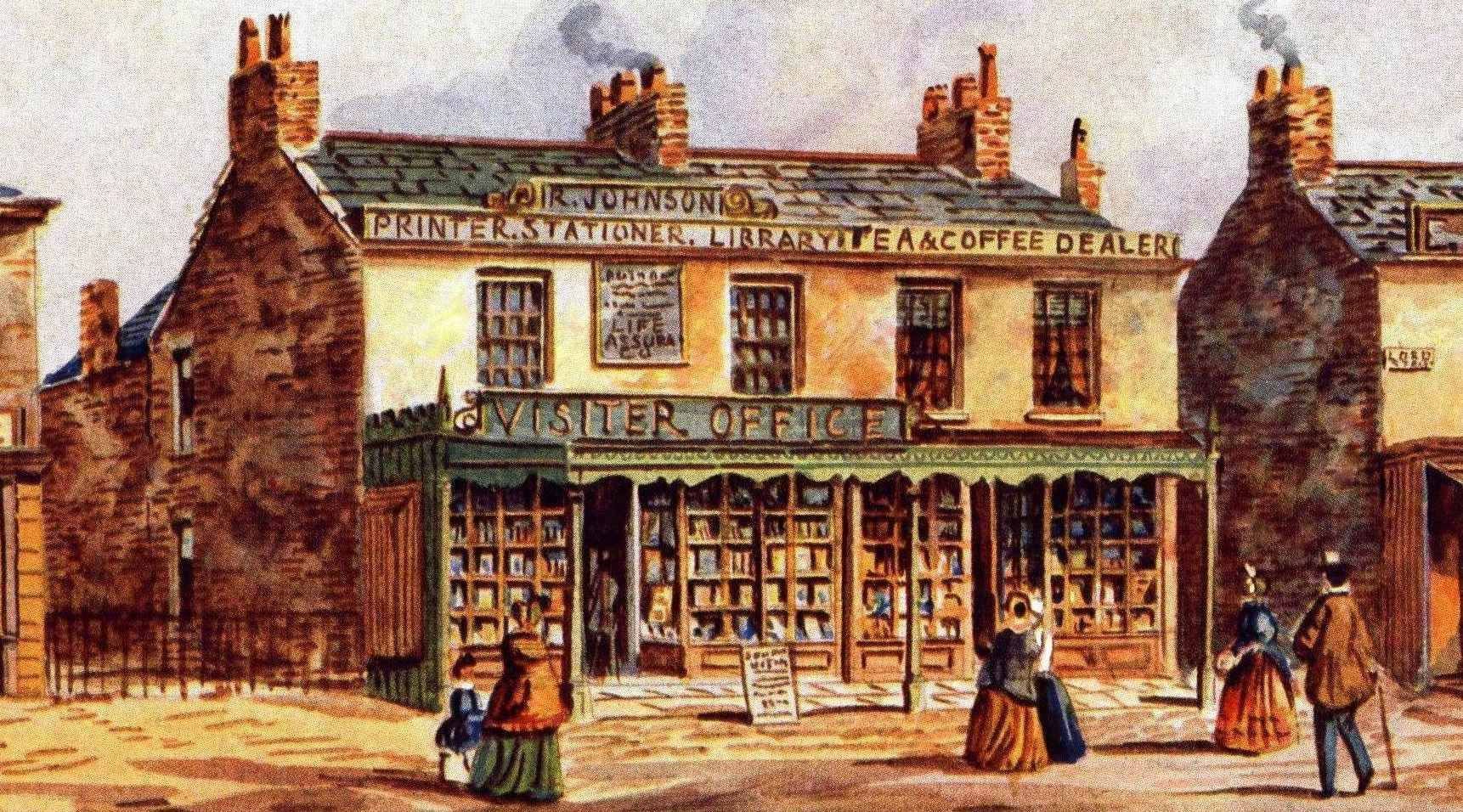The Southport Visiter celebrates its 179th birthday today!
The first ever edition of one of the UK’s oldest newspapers rolled hot off the presses on 4th May 1844.
It has been a firm family favourite in the homes of generations of Sandgrounders ever since.
For context, other major events in 1844 included the sending of the first electric telegram by Samuel F. B. Morse; the last pair of great auks died on the Icelandic island of Eldey; the first ever international cricket match took place; and Swedish chemistry professor Gustaf Erik Pasch invented the match.
People in our seaside resort were reading all the latest news 59 years before Wilbur and Orville Wright made their first powered aircraft flight in 1903; just three years after the man who founded Southport, William ‘Duke’ Sutton, died; when Queen Victoria (1837–1901), whose statue adorns Nevill Street, was just seven years into her reign; and just 29 years after Britain defeated Napoleon Bonaparte at the Battle of Waterloo (1815).
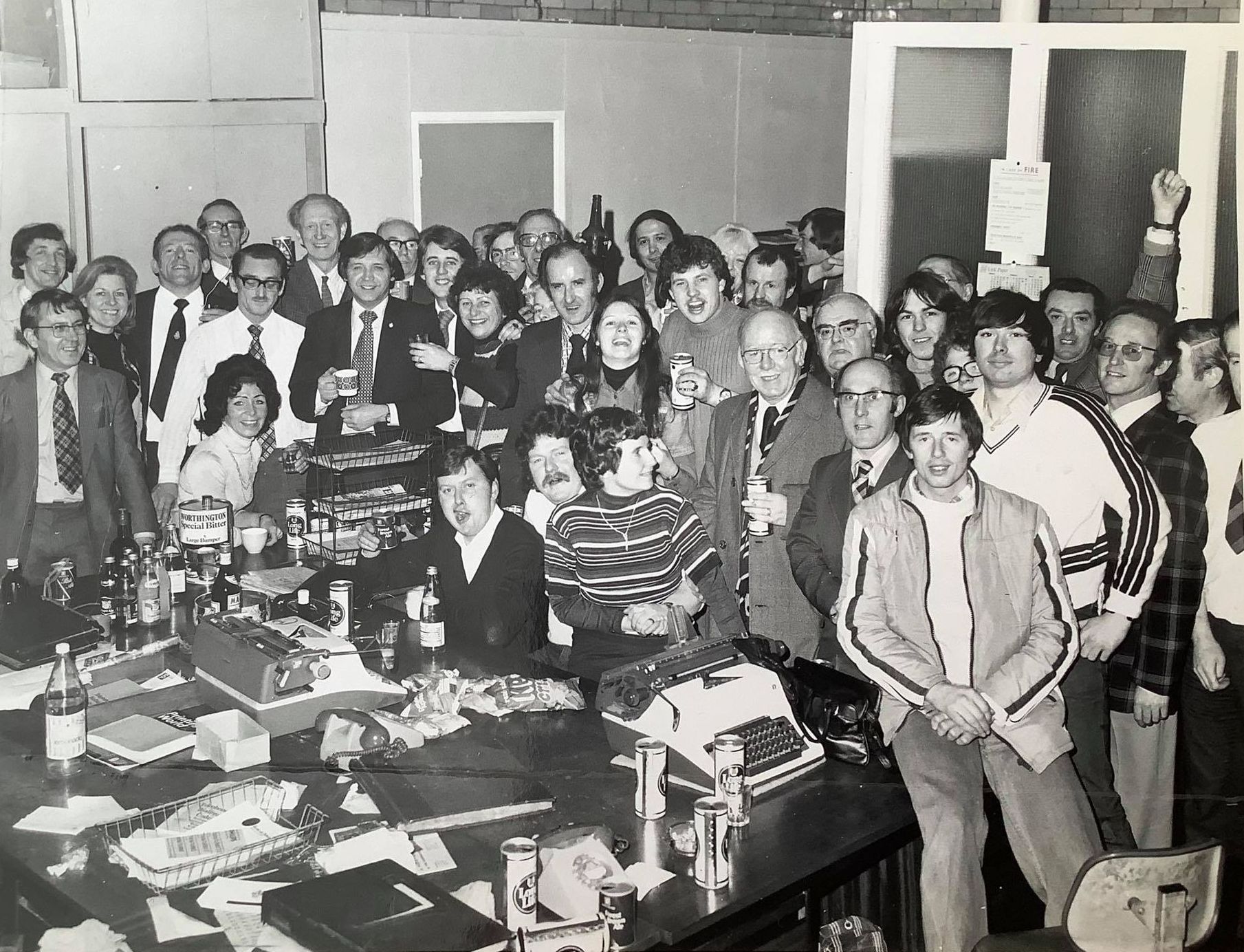
It preceded lots of newspapers across Britain, with the Manchester Evening News not founded until 1868, the Liverpool Echo in 1879, the Lancashire Evening Post in 1886, the Yorkshire Evening Post in 1890, the Daily Mail in 1896, and the Daily Mirror (Britain’s oldest surviving tabloid) in 1903.
What are your memories of the Southport Visiter? Have you featured in its pages? Please get in touch and let us know.
Before the internet and the arrival of social media, the newspaper was the main form of conveying news and what was happening in our town.
Also well read were the Births, Marriages and Deaths columns; the letters pages; the sports pages; and the advertising.
The Southport Visiter newspaper is still going strong today as it looks ahead to its 180th birthday next year.
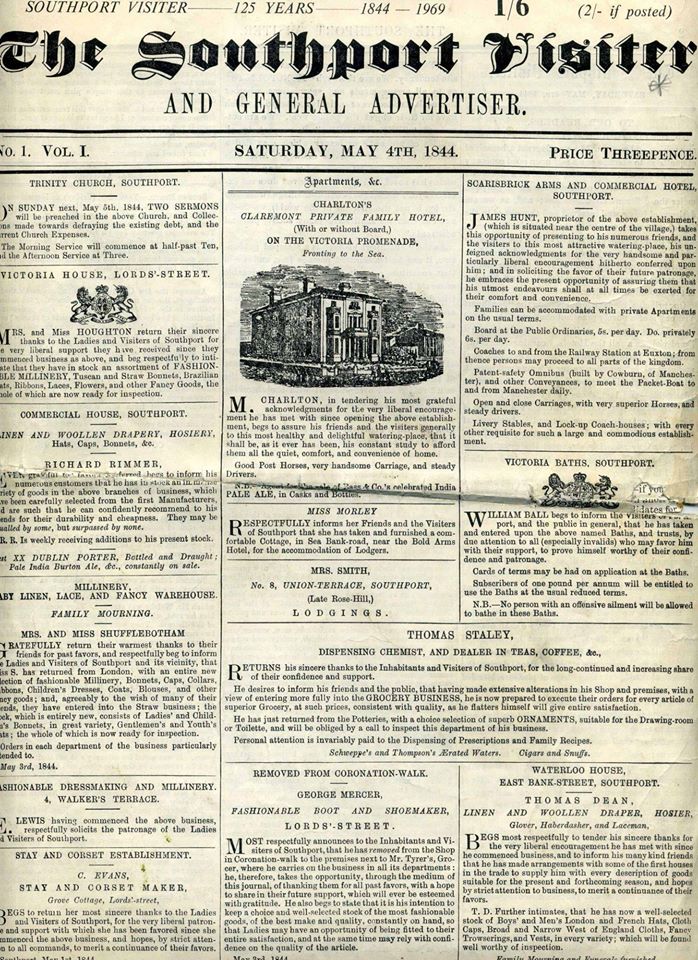
Southport Townscape Heritage Project wrote:
“Lurking on the nine miles of shelving at Lancashire Archives, Preston, is a copy of the very first issue of The Southport Visiter and General Advertiser, published on Saturday 4 May 1844 for the price of threepence. If you’ve ever wondered about that spelling of ‘Visiter’, back in the Victorian period both versions were perfectly acceptable.
“In 1844 the seaside resort of Southport had been in existence for 50 years, growing from a few houses and hotels among the sand dunes to a small town focused on what was then called Lords Street. The 1840s were a key period in Southport’s development. The Promenade and Nevill Street were newly built, the potential of railway links was being hotly debated, and new landowner Charles Scarisbrick had bought much of the town from the Bolds and the Heskeths – the original ‘Lords of Lord Street.’
“The name of the paper says it all. It was a clever mix of advertising aimed at the ‘Inhabitants and Visiters of Southport’, and included a long list of all the people staying in hotels and holiday accommodation – who wouldn’t want to spend threepence to see their name in print?
“Young Master Robert Munn of Hilton House, Prestwich, who was staying at the Mansion House, was one of those happy to broadcast the fact he was in Southport. Think of it as the Victorian equivalent of posting your holiday selfies on Instagram!
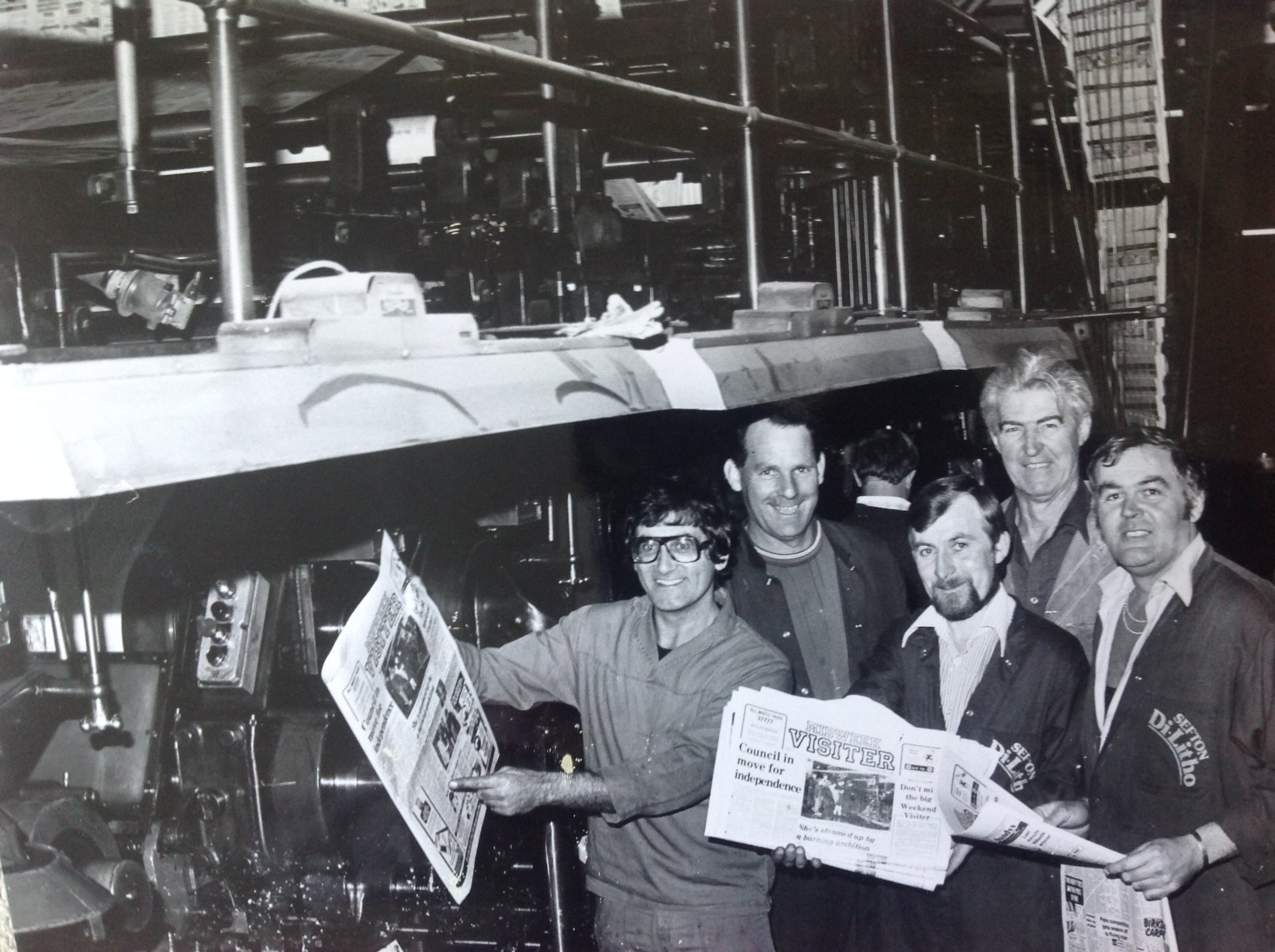
“Most of the visitors were from the Manchester, Bolton and Wigan areas, with a few from Liverpool, Ormskirk and West Yorkshire. But L Ward Esq. and TT Taylor Esq. had come all the way from Cheltenham and Glasgow respectively to enjoy Southport’s ‘tranquil and bracing shores’.
“Like most Victorian newspapers, the front page is entirely composed of adverts. The most prominent is for Mr Charlton’s Claremont Private Family Hotel on the Victoria Promenade. “Described as ‘Fronting to the Sea’, the accompanying illustration shows a building that was later Sir William Atkinson’s home (The Atkinson, Southport’s home of all things cultural, takes its name from his generous support). Proving that the promise of a good pint has always been a way to draw customers, Mr Charlton makes sure to add a note that he sells ‘Bass & Co’s celebrated India Pale Ale’.
“Other advertisers include the Victoria Baths, other hotels and lodging houses, but most of all, the vendors of fashionable hats and bonnets, shoes, children’s dresses and – possibly less fashionable – stays and corsets.
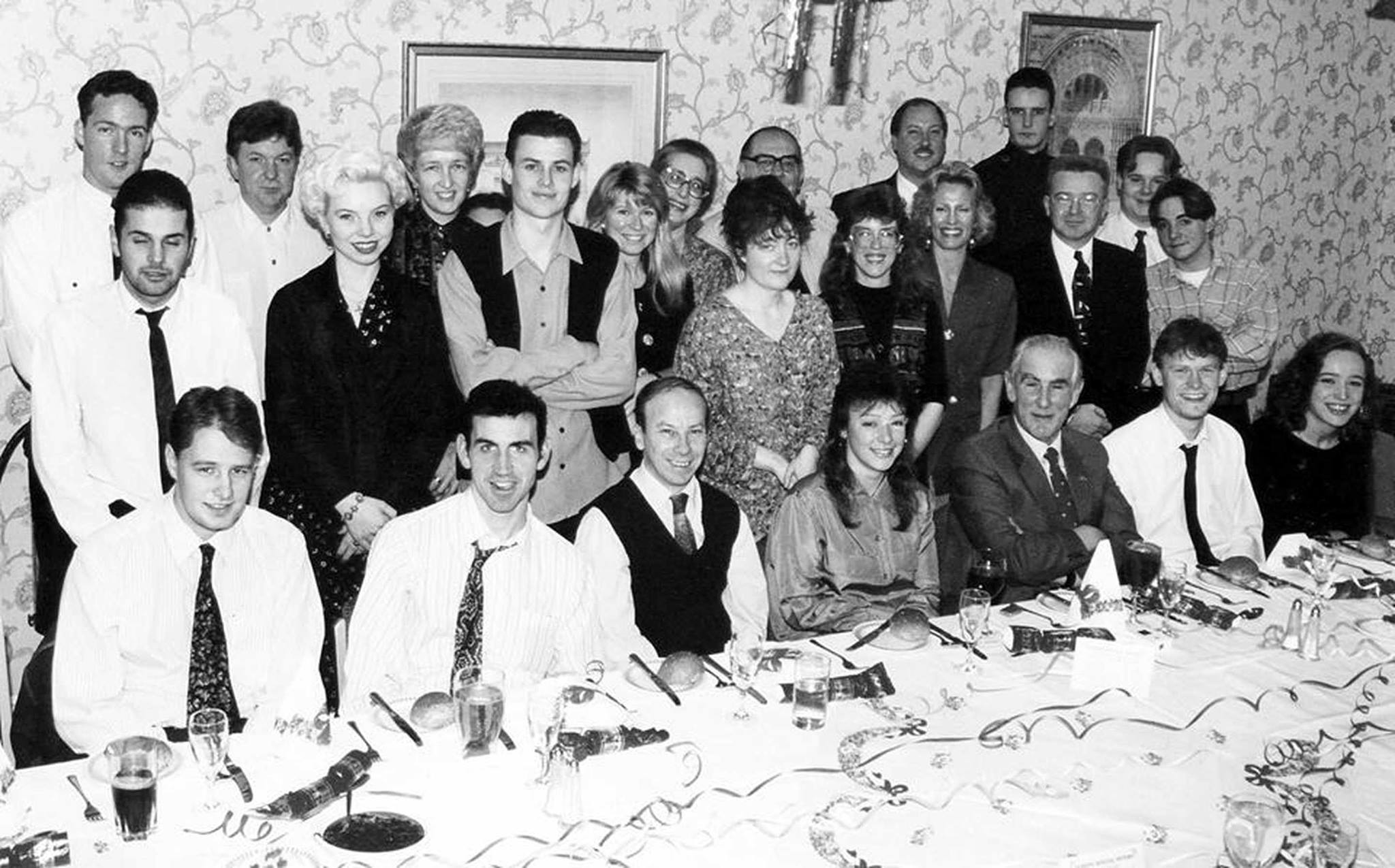
“A lot of the news ranges widely from smuggling, royal activities, debates in Parliament, a daring robbery, and a fatal accident on the canal. The Fashions for May inform us that waistlines are ‘very low upon the hips, and the skirts immensely wide and very long’, straw bonnets are now worn by all classes (not just working women), and the fashionable colours are ‘pale pink bordering on cerise, blue lilacs and greens of every shade’.
“Not to be missed in this issue – and in a nod to the craze for serialised novels that some say began with Charles Dickens’ ‘The Pickwick Papers’ – the first instalment of ‘The Legend of the Lord of Dunraven Castle’ draws readers in with the atmospheric, and sometimes spooky, tale of shipwrecks and heroic rescues.
“The ‘paper certainly lives up to the editorial claim to be all things to all people – we’ll spare you the jokes and the ‘Advice to young ladies’ – but there’s still plenty to enjoy. One of the three poems ‘written expressly for the Visiter’ still rings true today:
“Invitation to Southport
‘Tis an axiom true, that life without health
Can ne’er be enjoy’d, although rolling in wealth;
By why go to seek it in strange foreign lands,
When it’s here to be found on Southport’s fair sands!
There’s health and long life, floats in every breeze
Which reaches her shores from the far distant seas.

“So there you are – Southport in 1844, courtesy of the Southport Visiter and General Advertiser. “Trying to imagine what life was like in 1844 can conjure up images of a completely different world, but many of these visitors to Southport were hoping to enjoy all of the same things that we do today – a stroll along the seafront, a bit of shopping, and a relaxing drink at the end of a good day.”
The Southport Visiter is still published today, every Thursday, with subscriptions available.
Early editions, including from 1844, can be read on microfilm at the Local History Unit in Crosby Library.
The first ever edition was originally intended as a souvenir publication and had a circulation of 400, which took six hours to print. This 12in by 7in tabloid was created on one of the two hand-powered Columbian presses, inked with large hand-rollers; the employees took turns in ‘pulling’ the paper from the press.
The Visiter was founded by Robert Johnson, who was born in York in 1807, but came here in 1837, the first year of the Victorian era, to benefit from our seaside resort’s invigorating sea air.
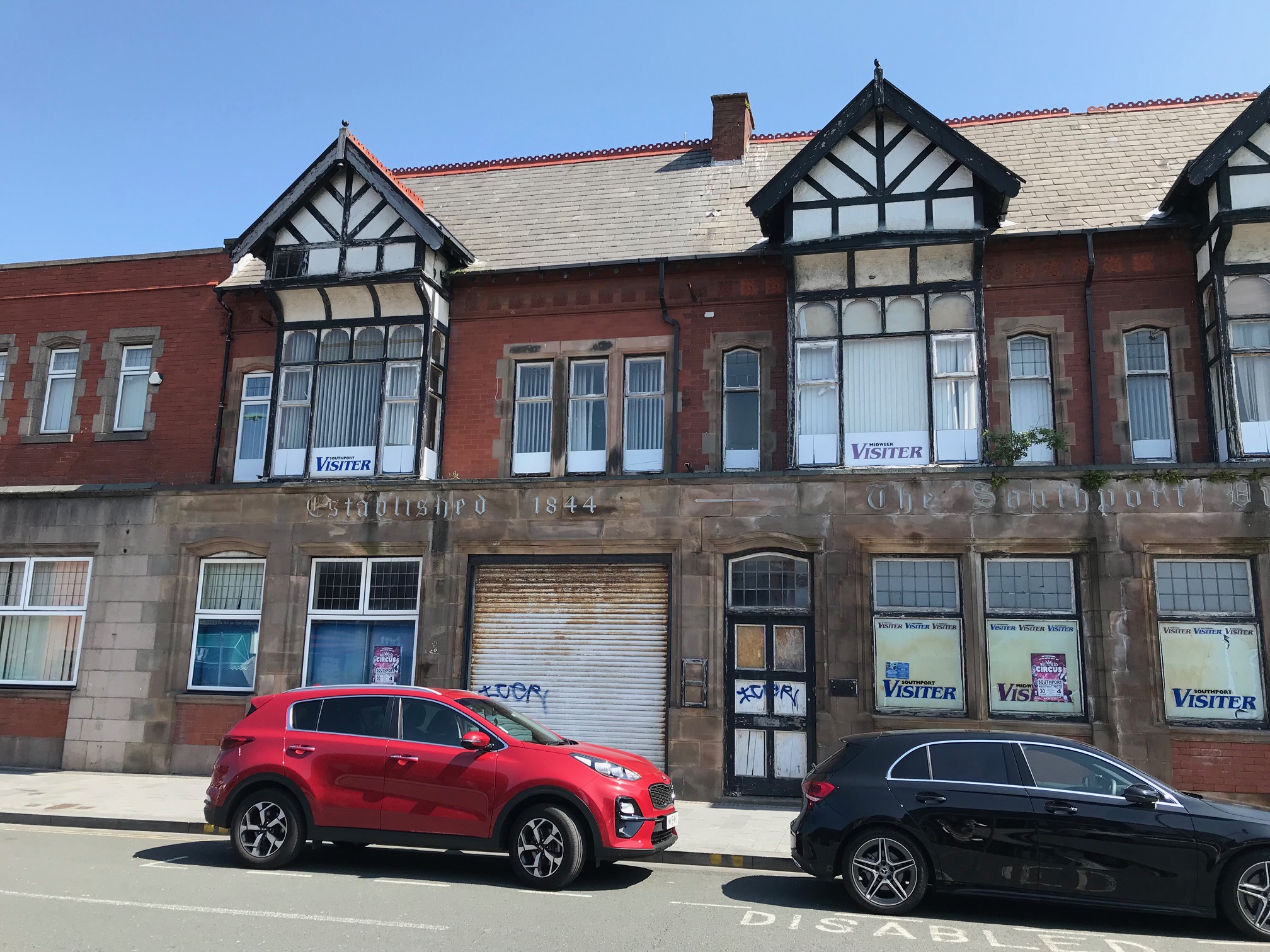
His first printing premises were at a small disused slaughter-house at 115 Lord Street, where the Vincent Hotel (formerly the Canon Cinema) now stands.
The early papers (which cost 3d) consisted of eight uncut pages of three columns, and the number of employees was less than a dozen (in 1894 it was about 100).
The Southport Visiter became a permanent and considerably enlarged weekly in 1852 and moved to larger premises that year at 149 Lord Street, the site later known as the Albert Hall, producing two editions a week.
The 1,000th edition came out on May 26, 1863, and, on May 5, 1877, the paper changed to three editions a week.
In 1881 the thriving business took additional premises, moving to the Billiard Room adjoining the old Scarisbrick Hotel, before moving (for the third time) to Tulketh Street in May 1889, where the business remained until 2014, before moving back to Lord Street, near the Prince of Wales Hotel.
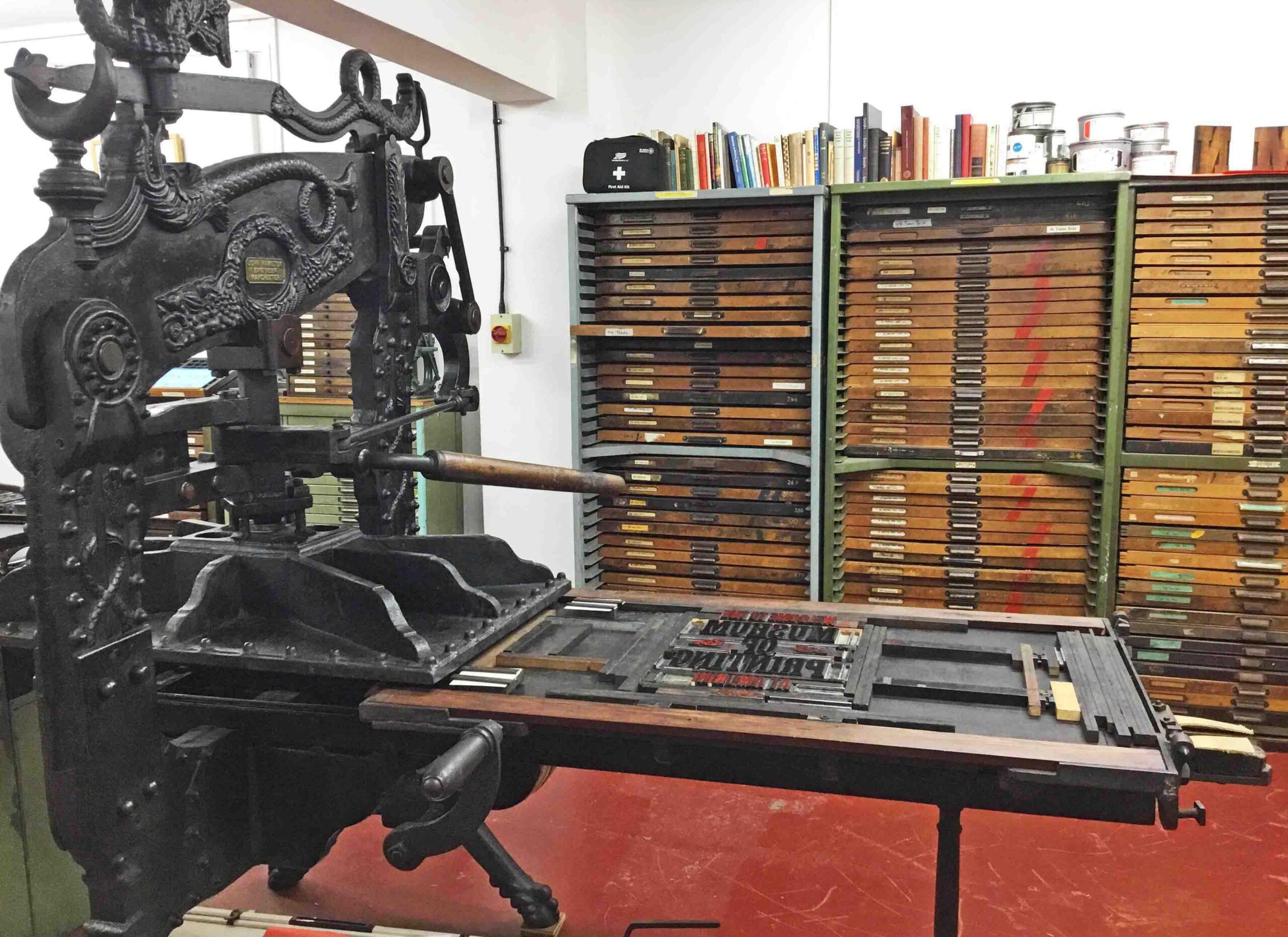
Tulketh Street was a thriving news hub, with huge printing presses churning out millions of editions until the demand for higher quality, laser printed colour presses saw production move to a more modern facility out of town.
Busy departments included editorial, sport, advertising, ad creation, IT, pre press, reception, and more besides.
The Thursday Visiter ceased in 1980 and, in September 1981, the Tuesday edition became a free ‘paper as the Midweek Visiter reached many thousands of homes.
At the same time the Southport Visiter moved to Fridays, though has since returned to its traditional Thursday publication date.
In March 1986 all Trinity Weekly News Sefton and Wirral newspapers changed from broadsheet format to modern tabloid form, with the first colour photographs appearing around this time.

The Visiter has maintained a full service of news ever since 1844, even during events such as the General Strike of 1926 and the Second World War, although the editions were much reduced during those troubled times.
So much has changed over the past 179 years, but then so much has stayed exactly the same.
Listing the names and addresses of every one of Southport’s hotel guests is no longer something the Southport Visiter does!
But every week the edition brings readers all the latest news about life in Southport.
Do you have a story for Stand Up For Southport? Please message Andrew Brown via Facebook here or email me at: mediaandrewbrown@gmail.com



